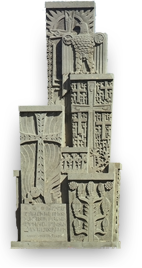Christian Identity
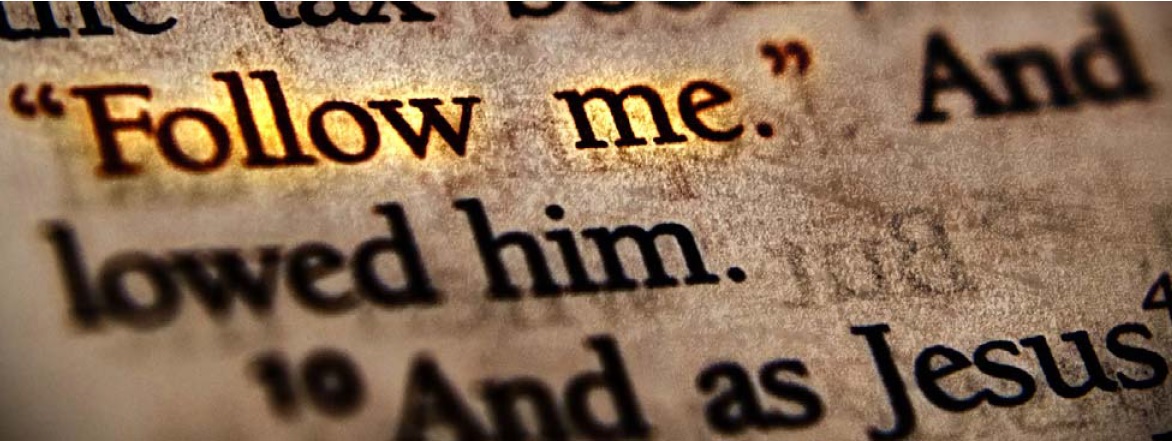
Two key elements are considered when defining the identity of an individual. They include our given names at birth and our faith background. These characteristics are essential in molding and distinguishing the individual in society at large. Herewith, we would like to focus on and further expand our explanation of the Christian identity.
Over the past two thousand years, the Church fathers have provided countless interpretations of the Christian identity. One simple explanation would be sufficient in describing the Christian identity. The true Christians are those who follow Christ and His life and attain in their spirituality the sacraments of the Church.
In the following paragraphs, we will be sharing with you short explanations of the seven sacraments and their respective roles in the cultivation of our Christian identity. Too often we forget that we have been created in the image of God. Hence, we weaken in our faith life, enter into a state of apathy, disregard the power of prayer, and consequently, enter into lives of sin.
The purpose of the sacraments is to guide one toward regaining the divine image in our spirituality. Therefore, the sacraments aim to strengthen our bond with the Almighty God and eventually to make God inseparable from our spiritual texture. Each Christian is privileged to act as a bridge between the community in which we live and Christ, our Lord. By realizing the graces bestowed upon us, we humble ourselves and become partners in God’s holy work.
The basis of the seven sacraments is the Gospel of Christ, our Lord. Every one of the sacraments have been reflected in the life of Christ during His early ministry. In the following passages, we will define the seven sacraments which were published by the Eastern Diocese decades ago with the purpose of educating the faithful.
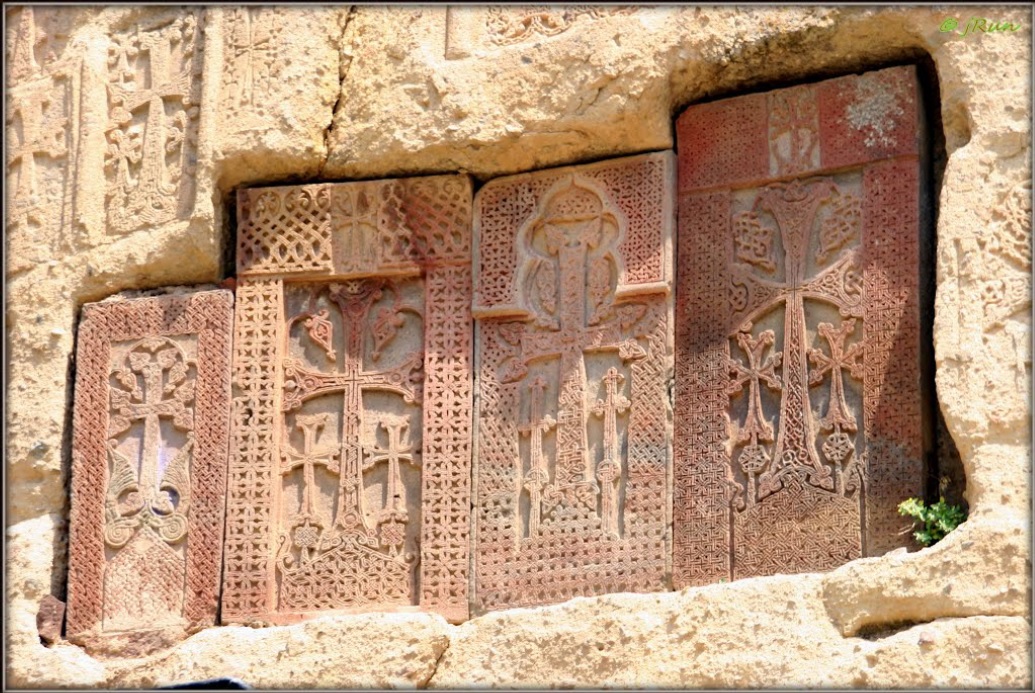
SACRAMENTS are the signs of God's love, symbols which show His plan for humanity. Saint Paul used the word mystery to refer to God's plan of always wanting to save, renew, and unite things in Christ. (The Armenian word for sacrament, khorhoort, means mystery.) Jesus Christ is mysteriously present in the seven sacraments and is Himself the officiant through the person of the priest.
Sacraments are outward or visible signs of ceremonies that give us God's grace. What is grace? Grace is the gift of God's friendship for us, the story of His constant love for us, and God's invitation to us to live in union with Him.
The seven sacraments are (in order of customary appearance in our lives), baptism, chrismation, penance, communion, marriage, ordination, prayers for the sick.
BAPTISM (MGRDOOTIUN) Õ„Ô¿ÕÕÕˆÕ’Ô¹Ô»Õ’Õ†
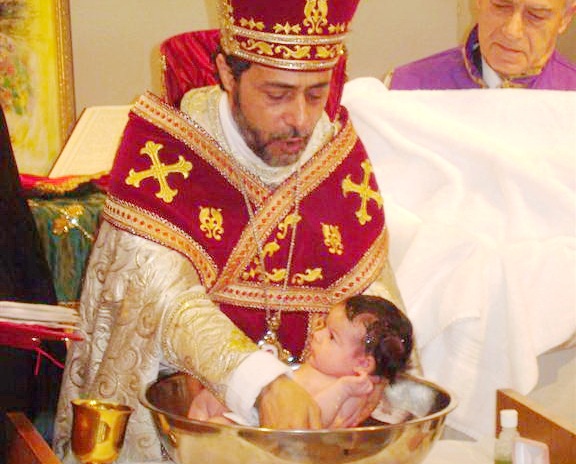
It was Christ's will and commandment that we be born of the water and the spirit so that we might enter into the presence of God and His Kingdom. Jesus Himself was baptized in the River Jordan by John the Baptist, and after His resurrection, He commissioned the apostles to go forth and make disciples of all nations, baptizing them in the name of the Father, Son, and Holy Spirit. In the early days of Christianity, baptism was performed in rivers and pools (King Drtad was baptized in the Euphrates by St. Gregory the Illuminator).
Reverence for the rite itself and for water, which in time came to receive a special consecration, gave rise to the use of a special font for the sacrament. This font became one of the most important parts of a Christian church everywhere. The ancient practice was to have it hewn out of a solid piece of rock.
In the early church, the sacraments of initiation (baptism, chrismation, and communion) were generally performed together administered by a bishop (who alone was allowed to bless the oil) and given to masses of converts after a period of study and prayer. Easter Sunday was a favored day for such mass baptisms. The Armenian Church has retained the earlier tradition of giving all three sacraments together at baptism.
The parents and the godparents, particularly the godfather (gnkahayr) present the child for baptism. (The gnkahayr would also sponsor an adult seeking baptism.) Some of the important symbols associated with baptism: the "narod", or red and white braid symbolizing the blood and water that poured from Christ's side, place along with a cross, around the neck of the child; the renunciation of Satan; the immersion into the water three times, and most importantly, water, the source of life. When the child is immersed he shares in Christ's baptism; when he is taken out, he shares in Christ's resurrection.
CHRISMATION (TROSHM-GNOONK) Ô´ÕÕˆÕ‡Õ„ ÔµÕ’ Ô¿Õ†ÕˆÕ’Õ†Õ”
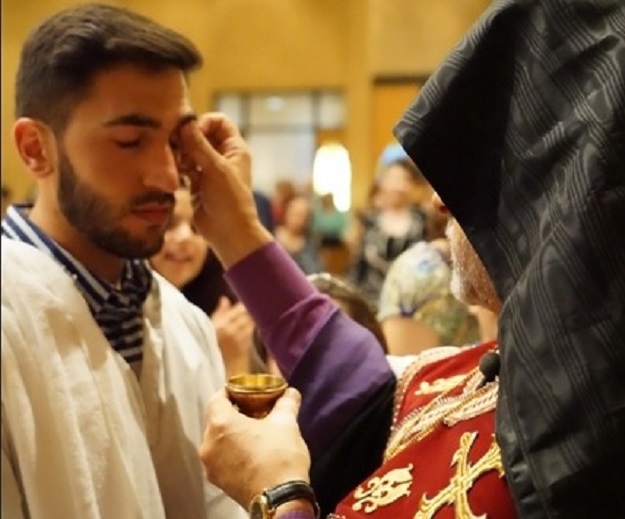
Like water, oil is an essential religious symbol, one of healing, light, reconciliation, and peace. The dove brought Noah an olive branch announcing God's forgiveness and reconciliation with humanity after the Great Flood. The peace and healing by oil is represented during the actual pouring of Muron into the water from a dove-shaped vessel. The priest sings the hymn "Arakeloh Aghavnoh" (the dove that was sent). This recalls the descent of the Holy Spirit on Christ. The priest then pours the Holy Muron into his palm and uses it to bless 9 parts of the body; forehead, eyes, ears, nostrils, mouth, hands, heart, back and feet, beseeching the Holy Spirit to seal the newly-baptized with faith and to protect the child's sight, thoughts, words, deeds, and service from the influences of evil in the world.
PENANCE (ABASHKHAROOTIUN) Ô±ÕŠÔ±Õ‡Ô½Ô±ÕÕ€ÕˆÕ’Ô¹Ô»Õ’Õ†
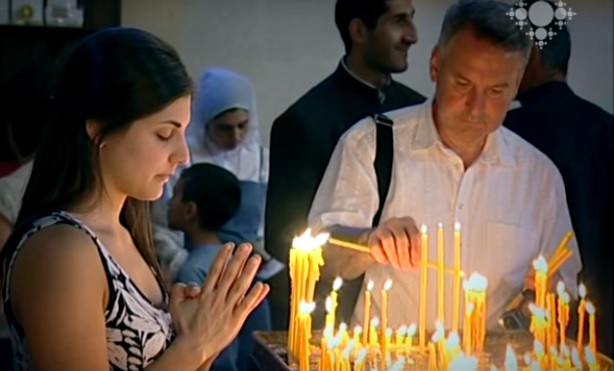
The history of this sacrament is long and complex. It begins, of course, with Jesus Christ. Christ gave power to the holy apostles to bind and loose sins. Sin is traditionally defined as "disobedience" or alienation from God which causes us to hate ourselves and be distant from others.
If we confess our sins, God is always ready to forgive us, just as the father did the prodigal son. Christian confession and even confession in the Old Testament was always public confession. There was no notion that confession be other than a public one. Over the years, it evolved into a "private" confession where Christians would reveal their sins to a priest. It is the practice of the Armenian Church to endorse both private and public forms of confession. The more practiced is the public one where those ready to take communion first step forward and confess their sins as a group ("megha Asdoodzoh"... I have sinned against God...).
The present form of confession is a shortened version of St. Ephraim the Syrian's 10 confessional statements. It was originally introduced into the Armenian Church by St. Gregory the Illuminator and translated from the Syriac by Sts. Mesrob and Sahag.
It is through this sacrament of healing that humankind is restored and reconciled with God. But of course, forgiveness can only become complete and genuine when we ourselves are forgiving.
COMMUNION (HAGHORTOOTIUN) Õ€Ô±Õ‚ÕˆÕÔ´ÕˆÕ’Ô¹Ô»Õ’Õ†
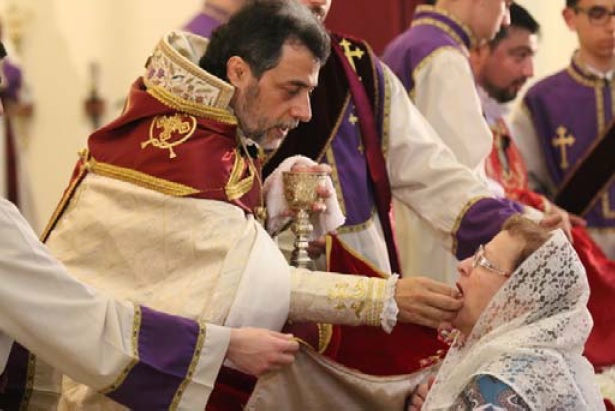
Sunday is the Lord's Day (Giragi is from the Greek for Lord"). It is a little Easter commemorating Jesus' triumph over sin and death. At the time of Sts. Thaddeus and Bartholomew, who brought the message of Christ to Armenia, the eucharistic meal was very simple. With the sharing of bread and wine, Christ was present. At about the end of the 10th century, the Divine Liturgy of the Armenian Church was formalized.
The language of worship is krapar (classical Armenian) with additional Greek and Hebrew words that have been retained from the early liturgies used by Armenians. Before St. Mesrob created the Armenian alphabet, services were conducted in Greek and Syriac.
Holy Communion is the purpose and reason Christians gather together to celebrate the mystery of Christ's presence in the world. The service of the Divine Liturgy (Soorp Badarak), of which Holy Communion is part, is the central action of the Christian community and binds us all together as followers of Christ's way. The Divine Liturgy is also our act of thanksgiving to God for the gifts of both earthly and eternal life which are ours in Christ.
HOLY MATRIMONY (SOORP BUSAG) ÕÕˆÕ’ÕÔ² ÕŠÕÔ±Ô¿
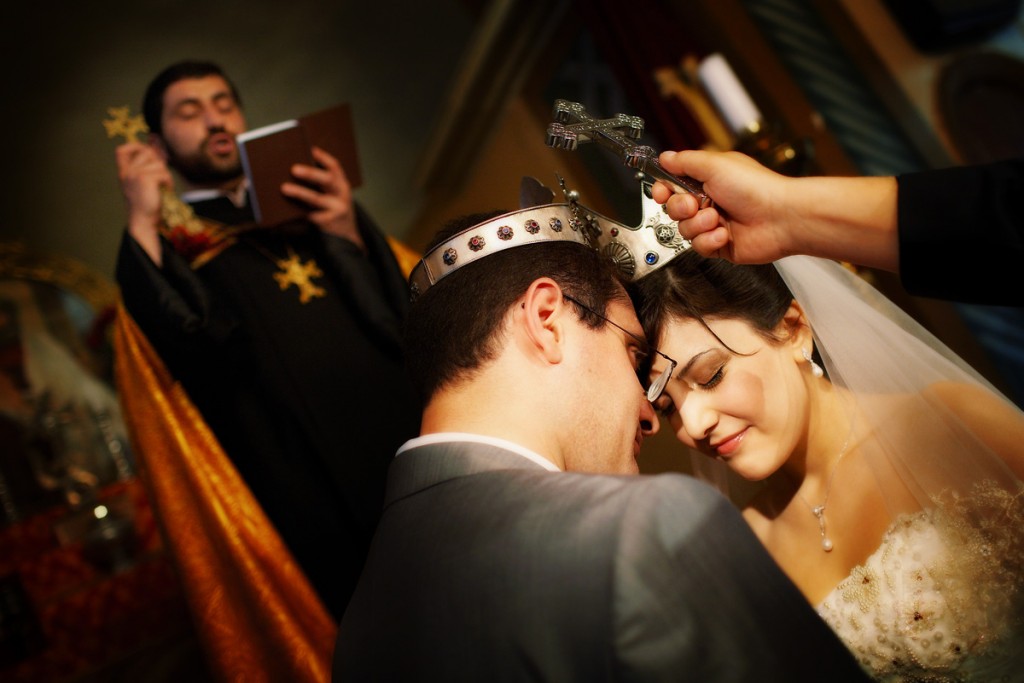
From as early as the 4th century, a rite of crowning for newly-married couples is mentioned by the early Christian writers. This would take place during the Eucharistic Liturgy. According to the teachings of St. John Chrsysostom, the crowns symbolized victory over passions for the couple and stood as a sign of the eternity of the sacrament. By the 11th century, the rite was separated from the Badarak.
In the Armenian rite, each act has a special meaning for the new life of the couple. Rings are exchanged and the right hands of the bride and groom are joined to symbolize the oneness of the couple. The crowns – narods are traditionally used in the rite – are signs of honor and glory and the new kingdom the couple will now rule (their new lives, their home). Drinking from a common cup of wine recalls the marriage at Cana and stresses the total sharing that will characterize married life.
HOLY ORDERS (YEGEGHETSAGAN ASDIJAN) ÔµÔ¿ÔµÕ‚ÔµÕ‘Ô±Ô¿Ô±Õ† Ô±ÕÕÔ»ÕƒÔ±Õ†
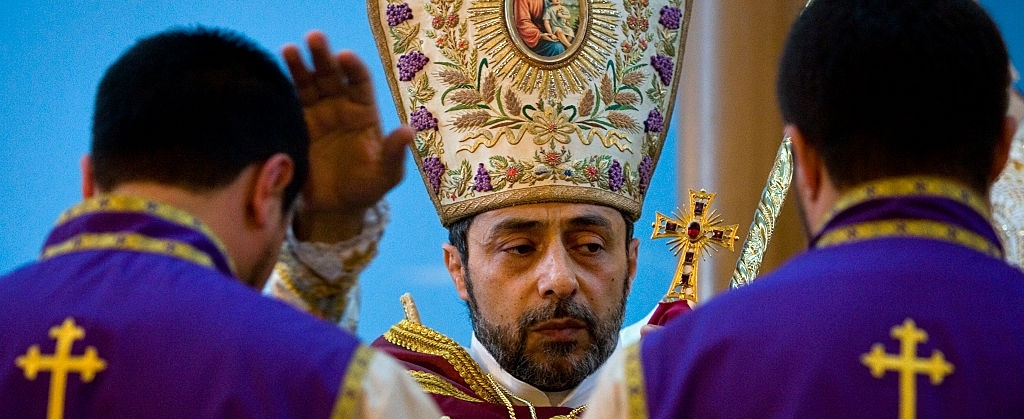
In the Church, there is a three-fold ministry or rank of clergymen. The three orders of clergy are deacon, priest, and bishop.
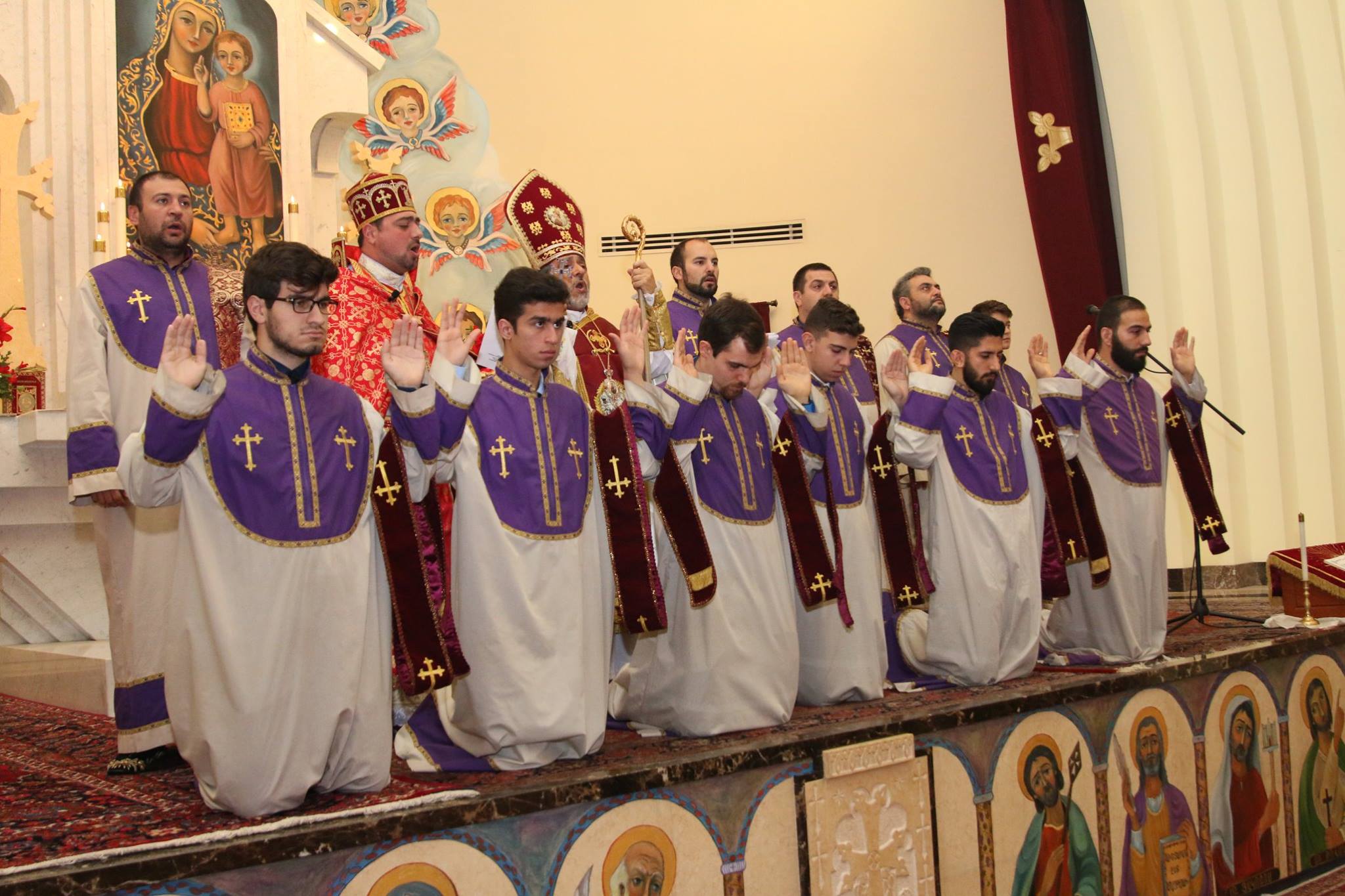
DEACON: The elevation of deacons is noted in Acts 6. The apostles prayed over them and laid their hands on them as a symbol of authority. The deacons were instructed to assist the apostles in serving the people. Even today, deacons assist at liturgical services and help with the administrative, charitable, and mission programs of the church.
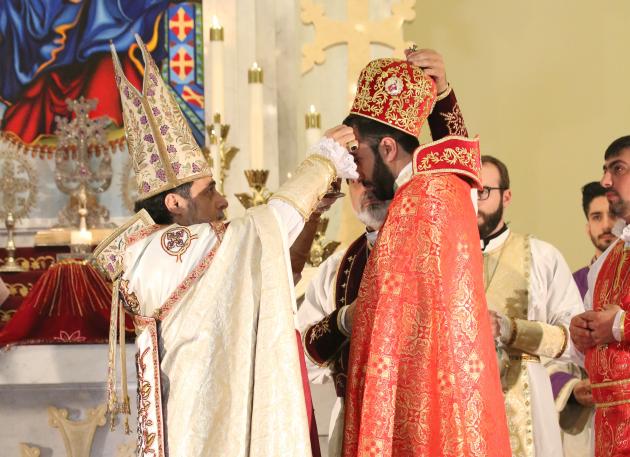
PRIEST: This order evolved fully by the second century when the huge number of Christian converts made it necessary to increase the ordained ranks. As today, the priest's task was to preach, sanctify and celebrate the Lord's Supper, and be the leader of his flock in the bishop's name.
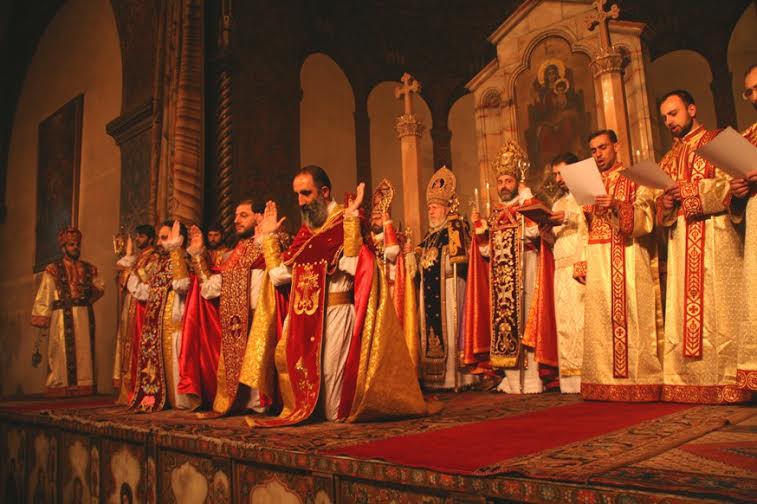
BISHOP: This office can be traced directly back to Christ who instituted the office through the Holy apostles. Originally, bishops served as parish heads, but as parishes grew, the office of priest was expanded and bishops began to serve at the head of groups of parishes.
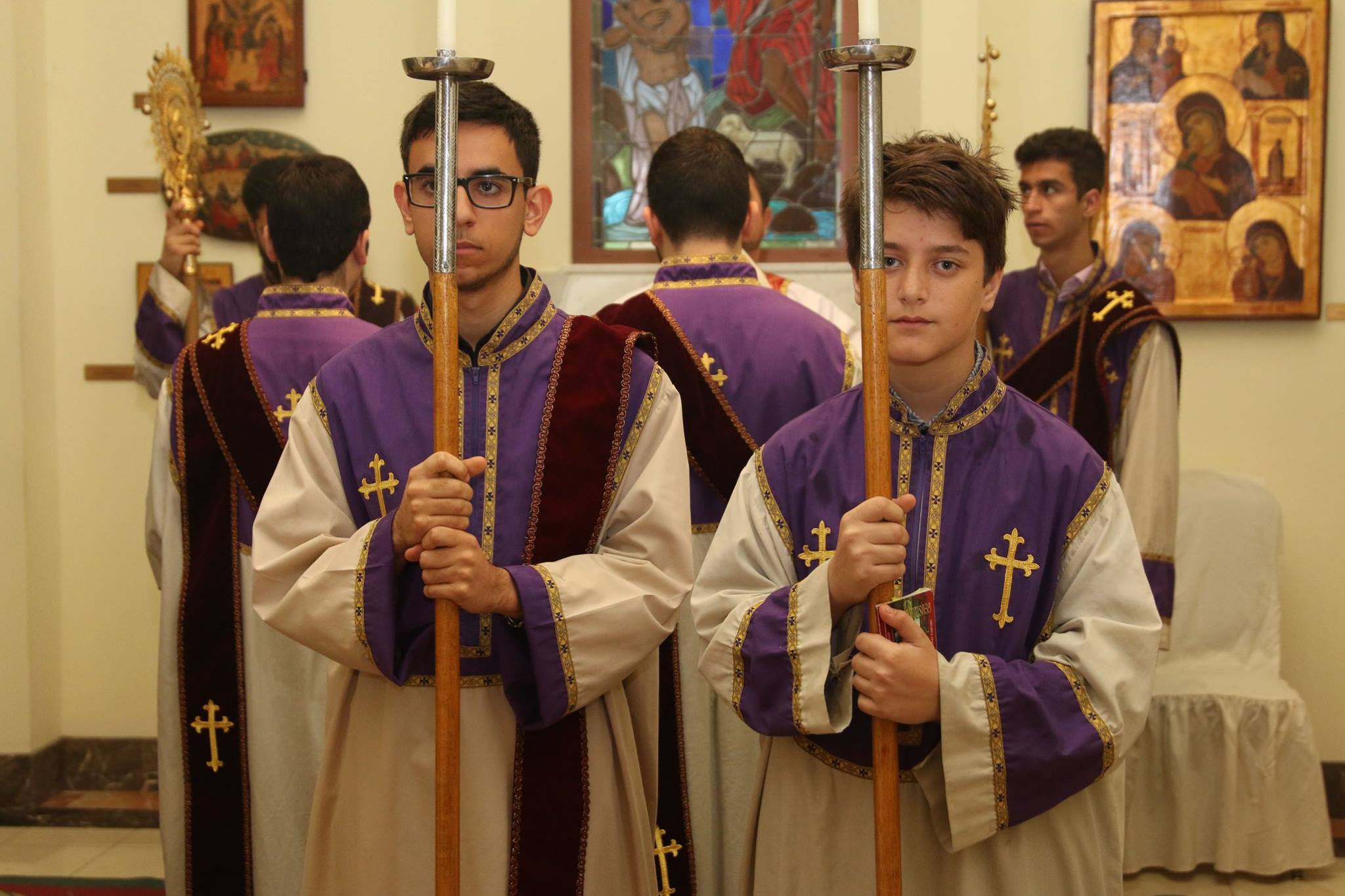
There are minor orders as well, namely clerk (tbir) which consists of 4 orders: doorkeeper, reader, exorcist, and acolyte and the sub-diaconate (gisasargavak).
RITES OF THE SICK (HIVANTATS ARAROGHOOTIUN) Õ€Ô»ÕŽÔ±Õ†Ô´Ô±Õ‘ Ô±ÕÔ±ÕÕˆÕ‚ÕˆÕ’Ô¹Ô»Õ’Õ†
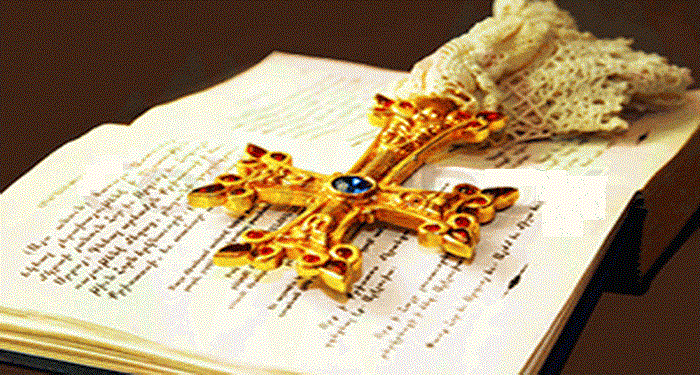
The sacrament of the sick has existed since the beginning of the Church. We have reference to it in the Gospel of Mark and the letter of James. After the eighth century, the sacrament became more and more associated with the clergy only and led to a change of name, extreme unction, or the final anointing.
In the Mashdotz (the book of rituals of the Armenian Church) there is a special prayer for the sick.
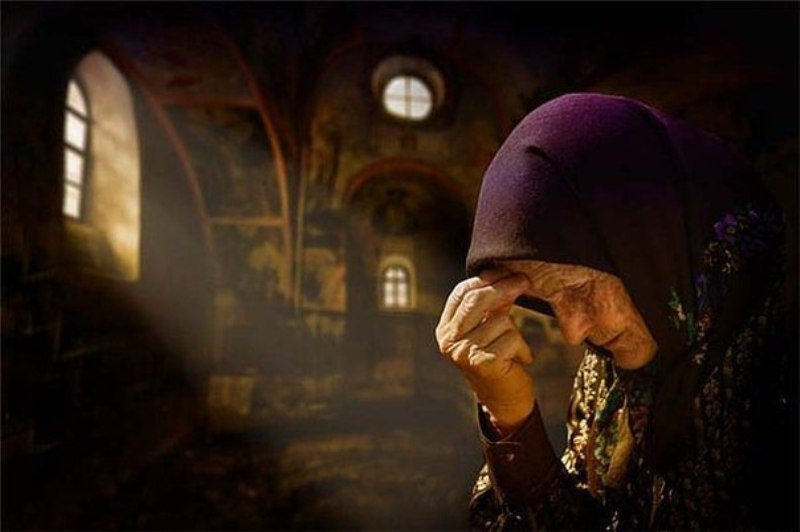
One of the aspects which develops our Christian identity is a prayerful life. As we pray, we grow in our relationship with the Savior. Christ, our Lord, lived a prayerful life. Moreover, prayer became the foundation of His earthly ministry. Without prayer, our spiritual lives are emptied of God and we can no longer become the golden bridge between humanity and God. When we pray, we make the commitment to follow Christ, we become a friend of God and finally, we put off the old self and become a new person in Christ.
People who pray reveal the spiritual gifts which God has bestowed upon us. We often speak about benevolence, forgiveness, justice, nobility and many other virtues. To be graced with virtues requires from us to be engaged in prayer with God. Without adhering to God's commandments we do not have the moral right to call ourselves Christians. The depth of one's spirituality is clearly visible to the person who prays and lives in the presence of God. Essentially, prayer is the force which transfigures the individual. Through prayer Christ opened before us the doorway to the righteous life.
Beloved faithful,
A strong Christian identity is a journey which requires from us faithfulness to God, piety and a life-long relationship based on prayer. It is then when the graces of the Holy Spirit bestowed upon us by God are enlivened and assume their respective roles in our lives.
The pinnacle and perhaps the defining moment in the life of a Christian lies in the ability to share
the love of God with those around us and to forgive by displaying a merciful character. It is at this moment when our lives are transformed into miraculous ones.
Open the doors to your soul so that Christ, our Lord may enter just as He entered the Temple. Pray fervently, so that our human powerlessness, that is so inclined to disobeying the Living Word of God, may once again accept the divine image of God and live in accordance with God's will.
O Jesus, symbol of love Melt my heart That is made of stone.
These few words of St. Nerses Shnorhali lead us on the path of our Christian identity.
Archbishop Hovnan Derderian February 21, 2016 London, UK







